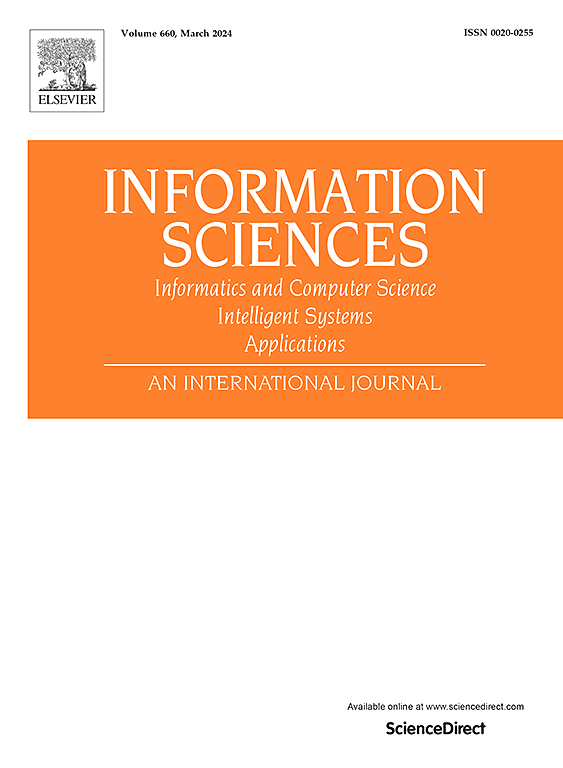Identification of switched Boolean networks
IF 6.8
1区 计算机科学
0 COMPUTER SCIENCE, INFORMATION SYSTEMS
引用次数: 0
Abstract
This paper addresses the identification problem of switched Boolean networks (SBNs). The model considered here is more general than conventional SBNs, which allows each subnetwork to exhibit distinct state and output dynamics, simultaneously governed by switching signals. The switching mechanism influences not only the evolution of system states but also the associated output behaviors, rendering existing identification techniques for traditional Boolean (control) networks inapplicable. In this paper, the reachability and observability properties of SBNs are first analyzed, and corresponding detection conditions are proposed. Building on these properties, criteria for identifying SBNs in both single-sample and multiple-sample scenarios are derived. The exact correspondence between states and outputs is found by incorporating temporal information and then valid algorithms are developed to facilitate this identification process. A new finding is that even if some subnetworks in an SBN are unidentifiable, the entire SBN may still be identifiable. Finally, several examples are provided to demonstrate the effectiveness of the proposed methods.
交换布尔网络的识别
研究了交换布尔网络(sbn)的识别问题。这里考虑的模型比传统的sbn更通用,它允许每个子网表现出不同的状态和输出动态,同时由开关信号控制。切换机制不仅影响系统状态的演变,也影响相关的输出行为,使得现有的传统布尔(控制)网络识别技术不适用。本文首先分析了sbn的可达性和可观测性,并提出了相应的检测条件。在这些特性的基础上,导出了在单样本和多样本情况下识别sbn的标准。通过结合时间信息找到状态和输出之间的精确对应关系,然后开发有效的算法来促进这一识别过程。一项新的发现是,即使SBN中的某些子网无法识别,整个SBN仍可能是可识别的。最后,通过算例验证了所提方法的有效性。
本文章由计算机程序翻译,如有差异,请以英文原文为准。
求助全文
约1分钟内获得全文
求助全文
来源期刊

Information Sciences
工程技术-计算机:信息系统
CiteScore
14.00
自引率
17.30%
发文量
1322
审稿时长
10.4 months
期刊介绍:
Informatics and Computer Science Intelligent Systems Applications is an esteemed international journal that focuses on publishing original and creative research findings in the field of information sciences. We also feature a limited number of timely tutorial and surveying contributions.
Our journal aims to cater to a diverse audience, including researchers, developers, managers, strategic planners, graduate students, and anyone interested in staying up-to-date with cutting-edge research in information science, knowledge engineering, and intelligent systems. While readers are expected to share a common interest in information science, they come from varying backgrounds such as engineering, mathematics, statistics, physics, computer science, cell biology, molecular biology, management science, cognitive science, neurobiology, behavioral sciences, and biochemistry.
 求助内容:
求助内容: 应助结果提醒方式:
应助结果提醒方式:


